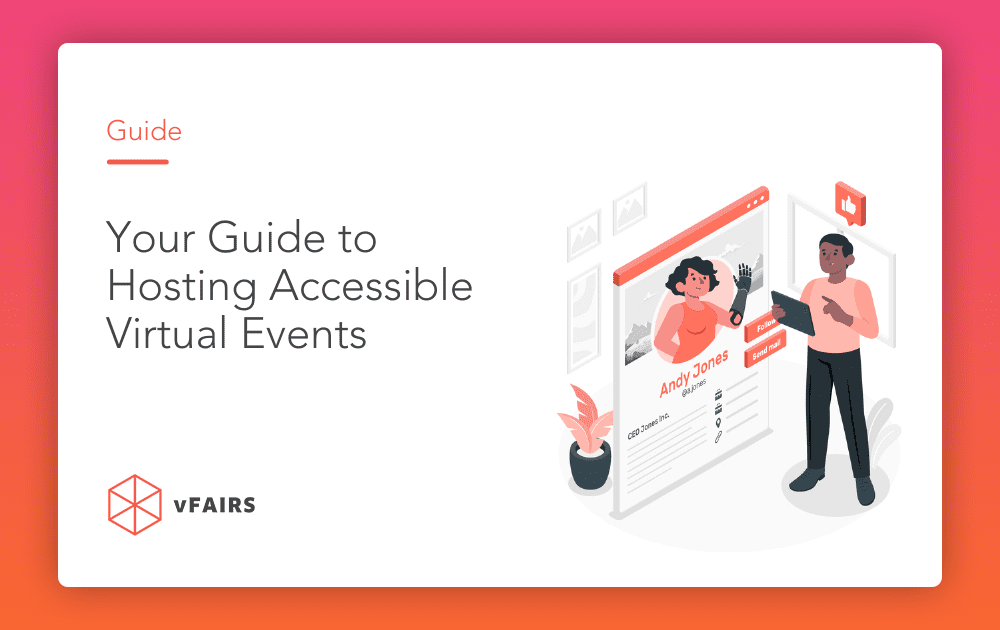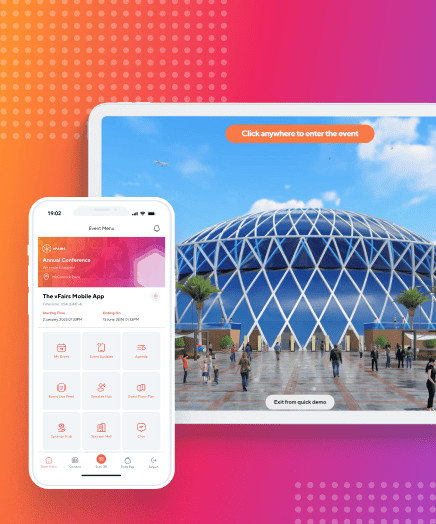It’s easy to take events for granted. However, there are numerous people out there who do not have this luxury. Experts estimate that around 20% of the global population needs some sort of assistive technology. So, when you host a virtual event, you do not want to leave such large audiences out. You need to make sure that as many people as possible can use it without any hassle. Therefore, it is important that you aim for accessible virtual events, which users can access regardless of ability, location, and other factors which would otherwise hold them back.
This not only makes you more inclusive, it also helps you get a wider perspective on things and make the world a better place. Therefore, when you choose a virtual or hybrid event platform, you should check whether it has all the features required for an accessible and user-friendly event.
What are Accessibility Features?
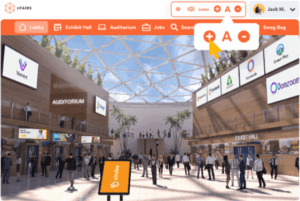
Accessibility features are designed to let people with any sort of disability or other issues use technology more easily. These cover physical disabilities, cognitive issues, and also tackle disorders like ADHD and epilepsy.
When it comes to accessible virtual events, vision impairment, hearing issues, and the above concerns are all quite relevant. Whether an event is virtual, physical, or hybrid, organizers need to pay attention to how accessible they’ve made it.
Why Should You Host Accessible Virtual Events?
No matter what kind of event you’re hosting, you need to make things accessible for all your audiences. This is something you will need to start thinking about from the very first event planning and execution steps. You’ll be missing out on a significant chunk of the audience if you don’t pay heed to creating accessible virtual events at all. However, if you do add a wide range of accessibility features, you can enjoy a number of benefits.
Promote Inclusivity
First of all, everyone must make sure they promote inclusivity. It is dire injustice if people are excluded from various career, learning, and socialization opportunities just because they live with a disability.
Organizations are becoming more aware about the need to focus on inclusivity, and you should do this too.
Increase Outreach
Many people may not be able to access virtual events if they’re difficult to navigate for any reason. So, you’d miss out on a considerable portion of your audience if your event is hard to access and navigate.
When you include accessibility features, you can increase your audience reach beyond what you would if you ignored accessibility.
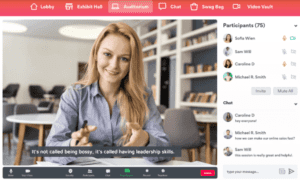
Create Opportunities
You can make the world a better place and open various opportunities with accessible virtual events. These features open the doors for people to get career, education, and other opportunities they may have had difficulty finding before.
When you create these opportunities, you not only boost the economy, but also help improve people’s lives. This extends beyond organizational goals, and is worth striving for.
Encourage Diversity
Even in this day and age, there are still major racial, class, gender, and ethnic disparities across organizations. This is because different groups simply do not have the same level of access to knowledge and opportunities.
If you host accessible virtual events, and carry on this accessibility with your processes, then you can have a truly diverse and inclusive environment. This brings multiple viewpoints into the fold, leading to more tolerant and understanding spaces.
Counter Ableism
Ableism has been around for too long now. It refers to all the systemic and social drawbacks people with any ability issues have to face. Whether someone has reduced vision or uses a wheelchair, the world is simply not designed to make their lives easier. So, you need to do your part at your virtual events, at least. This will help counter ableism and let these individuals show how much they have to give and take from the world with these accessible virtual events.
What Features Help You Host Accessible Virtual Events?
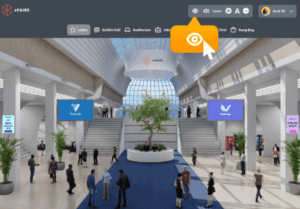
Now you know why you need to host accessible virtual events, the next question is obviously how you can host them. It’s not as difficult as you might think. If you go for a reliable event hosting platform like vFairs, most of these features are already available, and you just need to enable them. Here is a list of accessibility features which will help you meet your goals.
Screen Reader
Blind and vision-impaired people need effective screen reader compatibility. Many of them have screen reader programs installed on their systems, so you need to make sure your event components respond to the program well. This includes form labels, icon descriptions, image descriptions, alt tags, and optical character recognition technology. Your website must work with popular screen readers like JAWS, NVDA, VoiceOver, and TalkBack.
Keyboard Navigation
Not everyone can use their mouse, fingers, or trackpad to navigate their devices. So, you need to include keyboard navigation as well to accommodate motor-impaired individuals. You should make sure there are additional behaviors there using various JavaScript codes. This will ensure that people can go through your event using just their keyboards. This navigation includes scrolling, tab control, content-skip, and control over triggered popups.
Disability Profiles
There are a number of different learning and physical disabilities out there. You should make sure you enable different profiles for your virtual events. These profiles will make things easier for people with different issues.
Epilepsy-Safe Profile
This removes the risk of seizures by eliminating flashing or blinking animations and problematic color combinations. This means that accesisble virtual events are open for those with epileptic concerns as well.
Vision-Impaired Profile
This adjusts the visual aspects of your event to be more visible and legible to people with sight issues. This includes color contrast features, large fonts, and more.
Cognitive Disability Profile
This offers assistive features for people with dyslexia, autism, CVA, and other cognitive disabilities. It helps by increasing the focus on essential elements of accessible virtual events.
ADHD-Friendly Profile
This reduces noise and distractions on your virtual event website so that people with ADHD and other neurodevelopmental issues do not lose focus.
UI, Design, & Readability Adjustments
Simple adjustments can go a long way towards making your virtual event accessible to more people. You can work with your virtual event hosting platform to make these adjustments in the best way possible.
Font Adjustments
You can make your fonts larger, bolder, and more legible for vision-impaired people. Alter the spacing, height, and alignment to make the text even more readable for accessible virtual events.
Color Adjustments
Users should be able to access various color contrast options like light, dark, inverted, and monochrome. They should also be able to change the color schemes of titles, texts and backgrounds to make things more legible.
Animations
You should allow users to be able to stop animations from running. This should cover gifs, CSS transitions, and videos. This will help epileptic users and other people who find animations troublesome go through your event comfortably.
Content Highlighting
Users should be able to choose specific elements to highlight and read more easily for accessible virtual events. This can either cover focused or hovered-over elements, or both. You should enable this for at least essential elements like titles and links.
Audio Muting
When people use hearing devices, extra noise may cause them headaches and discomfort. There should be an option to mute all the audio elements of your event, so that users only listen to the content they choose.
Cognitive Disorders
Make sure your hosting platform for accessible virtual events links to a search engine, so that people with cognitive disorders can decipher the meanings of slang, phrases, initials, and others.
Browser Compatibility
Something as simple as browser compatibility may prevent your virtual event from being as accessible as you’d want. Do not assume that all your users will have the same level of internet access and updated browsers. Therefore, you need to make sure people with older browsers and slow connection speeds can access your event as well. After all, these issues often occur simultaneously with other accessibility issues, like age, physical disability, and economic disparity.
Key Takeaways
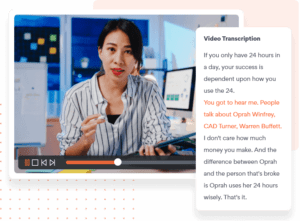
To sum up, you must focus on creating accessible virtual events as much as possible. These will not only make things easier for your users, but will also benefit your company, and the world as a whole. These features should be standard across all industries, so that no one is left behind when it comes to exploring any kind of opportunity.

